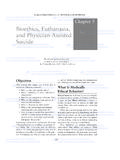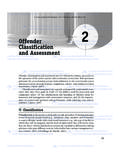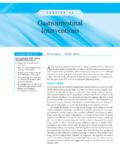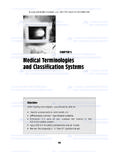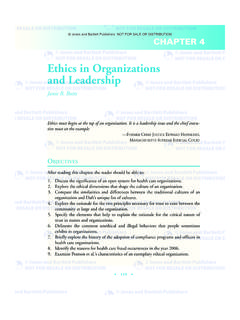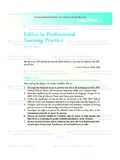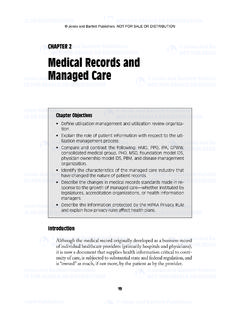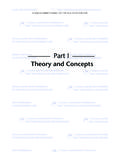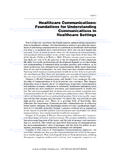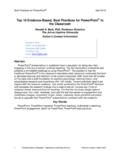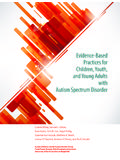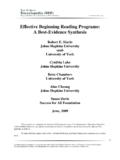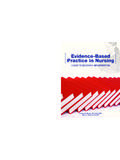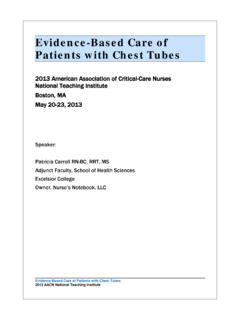Transcription of Connection Between Research and Evidence- …
1 12/27/06 10:47 AM Page 1. Jones and Bartlett Publishers. NOT FOR SALE OR DISTRIBUTION. Chapter 1. Connection Between Research and evidence - based Practice Sharon Cannon and Carol Boswell Chapter Objectives At the conclusion of this chapter, the learner will be able to 1. Identify the need for Research to validate Evidence- based practice 2. Define Evidence- based practice 3. Discuss obstacles to Evidence- based Research 4. Examine the nurse's role in Evidence- based practice 5. State how Evidence- based practice affects nursing practice Key Terms Evidence- based practice (EBP) Research process Obstacle Research utilization PICOT. 12/27/06 10:47 AM Page 2. Jones and Bartlett Publishers.
2 NOT FOR SALE OR DISTRIBUTION. 2 | Chapter 1 Connection Between Research and Evidence- based Practice Introduction Regardless of the specific health care setting a nurse may select for prac- ticing the art and science of nursing care, the overarching principle for the practice is the provision of quality nursing care to all clients with- out consideration of social, financial, cultural, ethnic heritage, or other individual characteristics. As the nurse initiates contact with the client, the client should be confident that the care provided by that nurse is based on the most current, up-to-date health information available. Having established the currency of the health information to be utilized, the nurse and client must also agree that individualized application of this information is , the need for Evidence- based practice (EBP).
3 Is confirmed by our expectations related to nursing care. The nurse who receives the assignment to care for an elderly woman, a young child, or a critically ill husband must come to the nursing practice arena with more than the latest infor- mation must be tested and confirmed. Let's consider the idea of asthma information, although any disease process could be utilized. Within nursing practice, certain health information concerning the management of asthma is accepted. The initial question that should be asked by a nurse would be: Is this disease management information corroborated by Research results? The answer to this question is frequently a negative informational basis for each aspect of the nursing care to be provided should be analyzed to determine its source.
4 Does the infor- mation come from general usage or is it based on information that has been established through Research endeavors to be accurate? Having determined the basis for the care to be provided, the nurse must then determine the application of the information based on the individual- ity of the client situation. The application of the information for each of the client situations presented here would depend on the specifics of the client's needs, the client's expectations concerning health, and many other aspects requiring modification of the confirmed Research appli- foundation of nursing care delivery must be Research -tested and Research -confirmed knowledge tempered by an awareness of the uniqueness of the client and the situation.
5 Although we realize that the health care field defines client and patient differently, for purposes of this text, these terms are used interchangeably. Pravikoff, Tanner, and Pierce (2005) described the process of EBP. to include assessing and delineating a problem through verbalization of an identifiable question, pursuing and evaluating the available facts, implementing a practice intervention as a result of the evidence , and evaluating the entire process for effectiveness. Initially, EBP requires the identification of the practice problem, then, the utilization of tested Research results to improve the care provided for the clients. According to Ciliska, Cullum, and Marks (2001), the three basic appraisal ques- 12/27/06 10:47 AM Page 3.
6 Jones and Bartlett Publishers. NOT FOR SALE OR DISTRIBUTION. Introduction | 3. tions are the same whether the clinical question is about treatment, di- agnosis, prognosis, or causation: Are the results of the study valid? What were the results? Will the results help me in caring for my patients? (p. 1 of 10). It was this need to incorporate proven practices into the provision of health care that fostered the expectations and development of EBP in the current health care arena. Providing a Line of Reasoning for EBP and Evidence- based Research Health care is a complex system addressing multiple health-related as- pects in an endeavor to accomplish the anticipated outcome for the the health care arena, nursing care is provided to in- dividuals in need of assistance related to their health atten- tion requires nurses to identify a core foundation of information that reflects quality care.
7 Thus, the need for EBP to be developed around a Research -centered foundation was envisioned. Porter-O'Grady (2006). suggested that the management of EBP requires the use of unique clin- ical applications based on accessible, up-to-date Research . In the quest for quality nursing care, the nurse must use both reliable clinical knowl- edge and high-quality clinical process of establishing a core foundation of knowledge has been called many things over the years, such as best practices, Evidence- based practice, and quality of care. No matter what the practice is called, the basis for the care to be provided must be grounded in Research . According to Melnyk and Fineout-Overholt (2005), when healthcare providers know how to find, critically appraise, and use the best evidence , and when patients Think Outside Make a list of the tasks that are routinely done by nurses dur- ?
8 The Box ing a typical clinical day. Carefully consider what evidence you have used as the foundation for these tasks. Are the skills for the tasks based on Research , personal preferences, clinical guidelines, or traditions? are confident that their healthcare providers are using Evidence- based care, optimal outcomes are achieved for all (p. 3). It is this assurance that the care being provided is confirmed from a tested Research foun- dation that allows for patient confidence in the nurses' commitment to quality health care. Nurses should not rely on unsubstantiated treatment plans but must endeavor to critically analyze aspects of the care to be provided to ensure that quality, tested practices are utilized in the pro- vision of nursing care for each individual.
9 12/27/06 10:47 AM Page 4. Jones and Bartlett Publishers. NOT FOR SALE OR DISTRIBUTION. 4 | Chapter 1 Connection Between Research and Evidence- based Practice The practicing nurse has to value the idea of the EBP process in order to facilitate its complete incorporation and implementation. Nurses must understand the value of integrating Research results with personal experiences and client values when determining the treat- ment plan that best addresses a situation's identified challenges. According to the Oncology Nursing Society (2005), even though a health care provider may utilize the optimum evidence available, each encounter with an individual continues to be unique.
10 The treatments and outcomes will change based on the uniqueness of the client's val- ues, preferences, interests, and/or diagnoses. According to Fonteyn (2005), a bonus of nurses' involvement in EBP activities is their im- proved ability to think critically and their increased understanding of and comfort with Research ; all of which seems to perpetuate their in- terest and success in subsequent EBP pursuits (p. 439). Nurses are taught, encouraged, and expected to think critically. This process of critical thinking corresponds to the use of EBP on clinical units and in primary care settings. Critical thinking embraces the need for health care to be based on a foundation of proven researched data and to include the client's use of unconfirmed reports, hearsay, and un- founded information, and the lack of client input do not fit with the provision of sound, quality nursing care at this point in time.
